
Retrospective of classic Atomic Age Science Fiction in the media detailing the two decades of the 1950s and 1960s, and the indelible impression it left on society.
By Sam C. Smith: www.facebook.com/Rekallism
“There is nothing wrong with your television set. Do not attempt to adjust the picture…”
INTROMISSION! Zerstörung durch Fortschritte der Technologie!
The reasoning for future Manifestos is to document my thoughts, opinions and interests on paper and digital format for generations to come. I wish to document what has gone before me for posterity, because as it currently stands, society has everything and nothing and will stumble into the future and forget about the past I wish to preserve. The future may be digitized, the world’s entire knowledge captured; here’s my input:
In Britain in 1957 most homes had a cooker, vacuum, and a radio, but only two-thirds had a TV. Surrounding most average large towns were up to 50 small theatrical cinemas within five miles of the town centre, most of which could hold 1500-2500 people. Since then these theatres have either fallen into disarray, converted into music clubs or eventually office blocks. But this is the reason that post-World War, the public needed a sense of escapism and the cinema was it.
During the fifties and early sixties, films were of varied quality, a prime example being Robot Monster, but like America with its drive-ins, and England with the theatres, people were glued to the silver screen and the many matinees on show every week. As the sixties progressed and the advent of the historical moon landing in 1969, people began to filter away from the cinemas and viewership began to wane. There was a renaissance of film in the 1970s with films such as Jaws producing the first blockbuster and the development of multiplexes but the focus here in this piece is to look directly at the two decades of the 1950s and 1960s explicitly with the monochrome (to eventual colour) films available at the time, especially in the science fiction genre as it reflected the scientific achievements, progression and concerns of the time.
Irrespective of country (to which I mean I will be referring to predominantly American movies of the time, but myself, the author being English and writing this piece in the UK) I think it is apt to quote John Landis when he talks about the genres of these movies:
“Fantasy, Horror and Science Fiction films are where most of the monsters (in this volume – referring to Monsters in the Movies book) are to be found. These three genres have among the most ardent and faithful fans. Just Google ‘Horror Film Websites’ and see how many people are deeply passionate about this stuff.”
It is true that a vast majority of any film fan’s collection will contain science fiction, horror and fantasy films, with a large proportion of those films regularly featuring on the top 10/100/1000 movies you must see (Metropolis, Blade Runner, Forbidden Planet, Alien, Star Wars, 2001: A Space Odyssey), but for the purpose of this article, the genre titles of fantasy and horror will be cited in tandem with science fiction as considering the fear and paranoia of the time, anything considered odd, fantastical or horrific was found in sci-fi too.
I too have my own reason for a professed love for the sci-fi genre generally; I can vaguely remember as a studious (hardly) yet daydreaming child who found some solace in myths and legends books. I was a child before the internet truly took off, and I could say the last of a generation to know what it was like to have to properly look through the local library to find anything of interest (as opposed to Google search) and so looking up the myths in the 001 section lead to seeing book spines of tomes by Asimov, Hynek and others. But in the section were a few books on UFOs and Aliens, an area still close to my heart. (Which when I speak of it, before you baulk, as a reader on this website have your own hobby/interest that is part of your own lifestyle) Thanks to a postal book club I devoured the opportunity to find books I want for cheap (50p) and I did find a book by David M. Jacobs called Alien Encounters (Secret Life in the U.S.) which documented the accounts of Experiencers and Abductees through regression hypnosis. This was approximately around 1993-94 when The X-Files was on BBC 2 and at its peak. This was also during my teenage (and impressionable?) years, when all we had was books and VHS…but it all seemed to fall into place.
 |  |
The Jacobs book is a well dog-eared yellowing book still contained within my own collection, and ultimately it informed my future interest in Psychology. In fact, my [UK] college years (16-18 years old) were spent studying Psychology, Human Biology and English Language, and my University Degree was Psychology and Sociology.
This is why I am admittedly taking pleasure writing an article such as this. But enough about me.
To appreciate what we have now in arts and culture, we need to look back in time to where it all originated. What is the compulsion for writing such a piece of work; it isn’t just simply facts, but a love letter. Look at the period of the 1950s to start off, as the golden age of film and television, but also an age of innocence, before advancements in technology came into the fore. How endearing it was to see how characters were created by hand and brought to magic by artists such as Ray Harryhausen or by people doing what they could with the tools of the trade they had at the time. In the thirties we had Dracula and Frankenstein‘s Monster, both humanoid, with limited special effects applied.
The 1950s and 1960s began to go one step further and is what makes these films of this era so very special. Not only were they creating stories that allowed the viewer to escape to another world of awe and wonder, which would have been comforting after the previous decades of the Wars and dealing with repairing hearts and minds, but also it paved the way in innovation of the creative industries. More on this later.
Certain elements have been lost today with the advancements in computer graphic technology, and audiences seem to have the lost the excitement about seeing films, due to being more so about hype and not the merit of the film. Has the film industry failed in that it is taking its audiences for granted, where as in the 1950s they really did appreciate what they had and made use of all available materials.
However, before we continue on the journey into science fiction through the lens of film and TV, we will consider the imaginative medium we know as comic books and pulp magazines. With this, I will refer directly to a book I own called: The Horror! The Horror! Comic Books The Government Don’t Want You To Read! And for this concentrate on the notion that during the 1950s onwards comic books and pulp fiction magazines ended up under serious and heavy censorship…
PUBLICATIONS! Censorship and THE BRAIN-BATS OF VENUS!
I draw your attention to the documentary hosted by Phil Coates titled Confidential File (1955) which focused upon the effect of specific comic book literature on children, legislature and censorship: (from a free DVD included in The Horror, The Horror book CLICK HERE)
From this documentary I gathered that such comics of the 1950s had a detrimental effect on the children, so much so he stated that:
“The sexy-crime* worshipping violence of certain comic books have…a lot of scathing criticism. Resolutions have been introduced, experts have written books, governmental committees have held hearings and even in the comics industry, steps have been taken to clean up some of the filth. The Comics Magazines Association of America Inc. has been formed and a code written and a CZAR appointed to enforce it.”
Although this documentary was only half an hour long, and given the era in which it was filmed, it sees as though the government were adamant to clamp down on potentially damaging literature that would affect the minds of the youth. However, looking back at this, I would have to criticise (with my mind and morals firmly entrenched in the future of this era) the hypocrisy evident in the show.
Take for example during a scene with a gang of kids reading horror and crime comics, Phil Coates narrates and I add my own opinions in brackets:
“When I was a boy and played with a gang, we did a lot of things; we roasted potatoes [Potential Arsonists?!] went on expeditions [Young Runaways?!] tipped over garbage cans [Hooligans and Health and Safety concerns?!] but we never spent an afternoon hanging around like this…READING”
[?!?!]Shock! Horror! Not READING! He goes on:
“What a wonderful thing this would be if they were reading something worthwhile that would stimulate their desire to build and grow. But they are not reading something constructive but stories devoted adultery, sexual perversion to horror and the most despicable of crimes” & “They haven’t yet come to the age where reality and unreality are divorced and what they read in a comic book may be much the same as a real life situation they may witness.”
Two points: 1. Need I mention Mills and Boon love stories that were intended for adults?
2. To which the image preceding it appears: ‘The Corpse That Came To Dinner’. Well, at least the undead were polite.
Ironically, in the end credits, Irvin Kershner’s name appears as the Director. He also directed Star Wars: The Empire Strikes Back.
*Sexy-crime is used in reference to horror/fantasy/sci-fi and crime comics all considered abominable at the time.
And so in the 1950s, children’s minds were being severely warped and subverted. But the undercurrent that ran through these stories that were clearly being published in the millions irrespective of the censorship was the impact of Nuclear War thanks to the standoff between America and Russia:
“Horror comics offer a privileged glimpse into the Age of Nuclear Terror, from 1947 to 1955. the prominence of horror comics exactly parallels the emergence of the United States as a military and economic superpower nonpareil: The nation had defeated two evil empires (The British did), and its productive capacities were intact; it possessed no only ultimate weapons (for a while, exclusively) but also the moral high ground over its potential enemies.” [The Horror, The Horror]
The one comic story that stood out to me in The Horror, The Horror was the one called ‘The Brain-Bats of Venus’. Firstly for me, it was the title, self-explanatory in its execution; it glared out from the page. After that, upon reading, the story makes YOU part of it by breaking the fourth wall. Add to that the fact that in the ’50s, rugby-style uniform was sufficient enough to travel across space?!
It’s that nature that added to the endearing-ness of such. To think that during the ’50s and ’60s that kind of story was censored/banned is strange to me. The only justification for it on the young minds of the time would have been the fact that it opens on a potentially scary splash page, and it ends (without trying to give much away) on a sombre note, all the while speaking directly to you, the reader. This leads me onto to the next part…
TRANSMISSION! Disasterpieces and shonky Effects!
Zones and Limits – Monochrome Pictures…
Two of the biggest and most influential television shows of the late ’50s and ’60s was Rod Serling’s The Twilight Zone [TTZ] (1959-1963) and Joseph Stephano’s The Outer Limits [TOL] (1963-1965). Although The Outer Limits came after The Twilight Zone, it was considered just as influential on the TV audience. Both had prominent themes, and TOL is often compared to TTZ but there was a greater vehemence on sci-fi, with the now-common ‘Monster of the Week’ theme apparent throughout both. You must understand that in review of the classic shows, you can tell by now that the main reason on UFOs. One stand out show in TTZ is Death Ship.
Death Ship displays what I term the most iconic and classic version of a UFO on screen (next to Harryhausen’s in Earth Versus The Flying Saucers) with the ubiquitous domed roof and base, saucer body and ray of light/fire exuding from the bottom. This style was more or less prevalent during this era of films and TV due to Kenneth Arnold’s description of his experience in 1947 of “Saucer shaped objects”. Kenneth Arnold’s description however actually closely resembles a crescent moon than a saucer, but when he went onto say they flew like ‘stones skipping across a pond’, the public must have come to the conclusion that an upturned saucer or two joined in an ellipse made more sense to them accounting for its popularity.
 |  |
A theme that was prominent in shows like Death Ship and On Thursday We Leave For Home was that the twist was that the spaceships were human piloted. Perhaps this was to make the science fiction ideology more safe and comforting to the audience that these ‘unknowns’ were not a horrific alien invasion. But to follow on from the alleged crash at Roswell (to which you were probably awaiting such a mention eventually, to which there is more on below) the missions were generally doomed to fail as suggestive of Roswell. This could also suggest that earth was not necessarily being invaded by another universal force, but it was us all along. Aliens were the scapegoat, acting as a cover for our government’s secret technological advancements, kidding the public.
The Outer Limits came after Twilight Zone and was clearly riding the wave of popularity of science fiction shows at the time. Even though TOL ran for a shorter period it is often compared to TTZ, but in this respect, TOL placed a far greater emphasis on science fiction than TTZ took with more fantastical/magical or bizarre. Comparatively both shows were self-contained in one-show story arcs and tended towards the typical monster-of-the-week. But when I watched the opening show of the first season, it set itself apart and lodged itself firmly in my heart. The Galaxy Being in its simplicity and execution is what I would consider the best of the rest. Given the subject matter, it’s the way in which the story plays out, the subtle comedic hints (whether existent or not) and the heartfelt dilemma on the Being itself made the show complete.
 |
There are other UFO-based Outer Limits such as The Chameleon, The Zanti Misfits along with the The Galaxy Being that did nothing to detract from the ‘Men-in-Suits’ (more on that soon) concept of aliens, but again we have to consider the era, budget and time spent on the shows. There is always a sense that in these two shows, the ‘alien’ technology was always exceedingly similar to human technology, ray-guns adapted from ex-wartime hardware, reel-to-reel computers with flashing lights available to both races and LADDERS, a technology both aliens and humans require …ladders
…the list goes on but I urge you to purchase the original Outer Limits one way or another to include in your library, not just for the shows I like, as there is something for everyone. That is as much as I need to say on that.
N.B.:Referencing the recent reboot series: Twilight Zone & Outer Limits in the 1980s and 1990s: worthy remakes, but not to confuse with this discussion in the article as I am focusing specifically on the early decades.
There is a stark difference between TV and film of the era that is evident: both had a major influence on society, but where film could reach thousands in selected theatres, TVs reach would stretch into the millions. That’s not to say that everyone with a TV watched only TTZ or TOL, and similarly, a lot of films were produced which not everyone could watch, but in defence of both in this article, I think it was clear that both types had an impact, if now fifty years later it is still being searched [via YouTube] purchased on disc or streamed online.
Pie-Plates over Hollywood and the terror of the wobbly Theremin!
And so there’s the films of the era; ultimately I can focus on the biggest films of the era such as Forbidden Planet, (1956) but given the extensive coverage of such a film, I want to look at the B-Movies that appeared during the time that, to me, were far more fun, endearing with a mix of shoddy effects or wondrous ideas that even I hadn’t considered…
The Thing from Another World’ (1951) “One of the films that kicked off the sci-fi/horror monster craze of the 1950s, The Thing from Another World’ is surprisingly un-reliant upon its monster…the result is a film not about an unprecedented physical threat but about the ways we respond to such things’. “˜This era of science fiction is known for being hit-or-miss with its monster designs, but even the misses tend to at least be amusing.” [Sci-Fi Movie Freak]
There are two features to these movies that made them enjoyable and memorable before even seeing them, firstly the long self-explanatory titles. Imagine! Cat Women of the Moon! Creature with the Atom Brain! Beast from 20,000 Fathoms! Voyage To The Planet Of Prehistoric Women And the obscure: Kronos! Gorgo! Reptilicus! As I understand it, the reasoning for such long explanatory (or obscure in reverse) titles was about the matinée showcasing the film on the outside of the cinema, usually as part of a double feature, second to a bigger more generic film. If not, as part of the draw of drive-in movies (something not all common in the UK) They set out to grab your attention ref: The Brain Bats of Venus! And force in as many nouns/verbs and adjectives into one sentence as possible, and if I was to try: The Perilous Passage to the Purple Planet of the Pleiades! (alliterative!) or how about; The Creeping Snot! I’d watch them! Forgive my lack of U.S.distribution, but a vast majority of these films open with ‘American International [Pictures/Television]’
These days we contend with one/two worded titles such as Dark Skies, Taken (TV), Paul and especially Unidentified – a recent B-Movie independent that did nothing to change the perception of the genre rather than add to it along with being just as generally vague as their middling storylines.
And secondly the wobbly Theremin! Considered a seminal part of any film of the era, this specific sound effect became synonymous with the entrance of a spaceship. If you’ve never heard of the term ‘Theremin’, you’ll know after the opening credits end (after the booming bass drum, xylophone and trombones) of “˜Kronos’ [found on YouTube] and the first image of a wobbly UFO appears from right to left, and the sound that follows is that sound. Add to that the reel-to-reel computer mentioned earlier, in this case the computer is named ‘SUSIE’, short for ‘Synchro Unifying Sinometric Integrating Equitensor’. No, I have no idea either.
 |
This article could not go without mention of Ray Harryhausen and his involvement in film. A previous article by me goes deeper into his influence; click HERE with particular care to reference Earth vs. The Flying Saucers (1956) Beast from 20,000 Fathoms (1953) and of course HG Wells’ First Men in the Moon. (1964) congruently I could and would’ve gone onto another thread about HG Wells especially in reference to War of the Worlds (1953) and the infamous radio play causing widespread panic in the general public when they thought the broadcast narrated by Orson Welles was a real bulletin and America was being invaded…but that is the serious implications of how the paranoia of the time had a real impact.
 |  |
And so on a lighter note, there was always Abbott and Costello. In Abbott and Costello Go To Mars’ (1953) the comedy duo inevitably endured hijinks’ and japes on their mission to Mars. Surprisingly the foreign posters marketing the film publicized that they went to Venus, and upon landing there was greeted by a host of Venusian Women, as was common then. But the most smile-inducing part was that, with the advent of the space race, they were introduced to “Food Pills”, a foodstuff idea that came about from research into outer space that never really came to fruition and anti-gravity, with a floating hat, clearly attached to a fishing line.
These little quirks are forgivable when such films were in their infancy given that most if not all were lifted from pulp science fiction magazines like ‘Amazing Stories’ and its ilk.
Take for example, a great and classy film of the genre: This Island Earth’ (1955)
“…is perhaps the best of the 1950s pulp SF movies, in that it embraces wholeheartedly the essence of the SF of the time attempting to convey a real sense of speculation and demonstrating a level of intelligence far beyond that of other pulp movies of the time. Unusually for 1950s SF it is consciously optimistic about the uses of science and does not see humanity as a race threatened by its own creations” & “Firstly, the movie ignores the Cold War mentality that was informing so much SF at the time, including such classics as The Thing From Another World (1951) and Invasion of the Body Snatchers (1956) instead preferring to show our first contact with an alien race as amicable” [Sci-Fi Freak]
It would be remiss for me not to talk about The Day The Earth Stood Still (1951). I am well aware of the other films mentioned and their impact, but it was the commentary track featured on the DVD from Director Robert Wise and Nicolas Meyer which sparked my interest and felt it requires mention here on the way in which people are affected by events that feed into the films made:
Meyer: “What did you think you were saying? (with the message/tone of the movie) [Did] the idea of the film appeal to you as a story that is essentially a sort of anti-nuclear message?
Wise: That was important to me, but also the fact…see I’ve always been a strong believer in UFOs, in the existence of UFOs
Meyer: Really?
Wise: Yeah, though I’ve never seen one.
Wise: I feel that for us to think we’re the only possible intelligences in the whole universe is so egotistical, it’s impossible to accept
Meyer: A terrible waste of Space
Wise: Absolutely.”
And FINALLY, the daddy of all the movies at the time: PLAN 9 FROM OUTER SPACE (1956), The most legendary B-Movie Director of all time, Edward D. Wood Jr., assaulted audiences worldwide with a string of bizarre, no-budget fusions of horror, science fiction, noir and comedy. His oddball legacy is apparent in his indisputable disaterpiece Plan 9 From Outer Space which offers pie-plate flying saucers, incompetent alien leaders, goth favourite Vampira and a post-mortem appearance from Bela Lugosi himself in his last role. Wood wrote, produced and directed Plan 9 (originally titled Grave Robbers from Outer Space – which offended the religious investors) and premiered at a small screening in 1957, was released theatrically in 1959 and sold to late night television in 1961 thereby finding an audience One kid of the new found-audience was no doubt one young Robert Bartleh Cummings who later became Rob Zombie.
From the special features from the Tim Burton biopic Ed Wood Production Designer Tim Duffield talked about during the production of Ed Wood of how the in-jokes and background imagery he placed around the film was to play homage to Plan 9 and its shonky effects and societal inferences…
“When Bo Walsh and I work together, we always come up with little concepts to give a film a different level. (In Ed Wood) Flying Saucers were a recurring image so I tried to have some image of a flying saucer in every set, that some of the general public picked up upon. So everything is a big round disc floating over someone head (referring to light shades etc that in monochrome appear to hover stationary) as a little homage to the ‘Flying Saucer Craze’ of the 50s that I threw in there as in in-joke. He (Ed Wood) had a certain naïve style, it’s really refreshing, now that everything is over-produced and over-massaged digitally, a really fresh way of doing a movie, set the camera, shoot and move on.”
This impact of the ‘Flying Saucer Craze’ had to come from somewhere and sightings of unknown phenomena around the world increased as a product of…
OBSERVATIONS! Roswell, Sightings, Science Fiction versus Science Reality!
“July 16, 1945, the day the Atom Bomb exploded. An event not just noticed on Earth, but which sent shockwaves across the galaxy and beyond.”
“Ever since the UFO phenomenon sort of exploded in the public consciousness in the late 1940s people have wondered, why now? why now? And of course the first answer people came to was now we have the atomic bomb…” -Richard Dolan [Author of ‘UFOs and the National Security State’]
The end of the second world war (during this period American pilots spotted unusual lights and the term Foo Fighters was coined). Kenneth Arnold sighting then followed the Roswell UFO crash in July 1947. The UFO phenomenon was born and was never easy feats from the get going. After Jesse Marcel a major in the United States Army Air Force based at Roswell (New Mexico) was asked to go an investigate the UFO crash after rancher Mack Brazel brought in debris from the wreckage, and had examined the material for himself, truly believing that what crashed that summer was not of this planet, he was faced with a dilemma. The news was broken via the Roswell Daily Record that a flying saucer had crashed. However, higher ranking officials in the United States Army Air Force/Government asked Jesse to go to Dallas, Texas where he was told in no uncertain terms that what crashed was not a flying saucer, but a weather balloon for Project Mogul, he was told to pose for photographs holding material that was not the same material he had handled, to allegedly cover-up what he had actually handled. For many years after this, both himself and his son Jesse Marcel Jr. were committed to uncovering the truth about what had happened at Roswell that Summer in 1947, to this day the event has rooted itself in the American folk-lore and is the leading light in the world of Ufology.
During the 1950s it appeared as though both Hollywood (playing on the idea that our skies are not safe and we had better watch out and the countries need to get back to normal and have an escapism) and real life events such as the second world war, paranoia that other countries were planning nuclear warfare and with strange sightings and the UFO crash at Roswell…together it was the magical cocktail.
Utilising the medium of film to tell stories of other worldly beings visiting earth, after the event at Roswell…was this what caused the high number of UFO sightings and alien contact/experiences that would later follow. It is no surprise, jumping forward to the 1990s with the television series The X-Files, those people’s’ interest in UFOs and alien contact reached an all-time high, not to mention the abundance of merchandise that became available on the market. I feel The X-Files really did mark a poignant moment both in television and Ufology. Chris Carter creator of The X-Files utilised actual historic events from American history and created a mythology that a lot of fans would come to hold very dear, like Star Wars, to them it was real, and it was like a religion, it was something magical to behold and to believe in…hence one of the most memorable lines from the show…’I want to Believe’…it is that hope that we hold onto that there is something beyond just us…that us…just isn’t enough.
A counterpoint that should be included that during these decades and the proceeding ones that it has been noted that the sightings of UFOs or aerial phenomenon did tend to fall in line with what was on TV and film because we came more aware to watch the skies after such. Therefore, the larger the amount of sightings usually equates closely to what’s on TV at the time. This has been discussed in the following article in the Guardian Newspaper [my newspaper of choice – though there are others with their own bias]: http://gu.com/p/2a5z4 The one place in the UK to submit any alleged sightings you may have had been the Ministry of Defence. Nick Pope worked on the ‘UFO desk’ in the MoD and was originally a skeptic assigned to take in reports, disseminate and conclude on the reality and possible security threat it offers if any foreign aerial phenomena posed a risk to the UK. After working 3 years at the desk of his 20+ year career at the MoD, Nick Pope has since gone on to become a lecturer, public speaker and talking head on many a UFO-related TV show. In an article for the Guardian and due to budgetary cutbacks the MoD stopped reporting on UFOs as it was deemed that they were not proving to be a risk to British skies, and closed its hotline. ‘How not to report a UFO’: http://gu.com/p/2cyt5 & ‘UFOs the (boring) truth is out there’: http://gu.com/p/2f4x6
A point Nick Pope makes about files released by the MoD:
“The X-files cover the period 1994-2000. It’s interesting to note that the cult TV series The X-Files was at the height of its popularity at the time…I’m sceptical about the link between science fiction and UFO sightings. While the popularity of the X-Files might make some people speculate about aliens and government cover-ups, there is no evidence to suggest that sci-fi films and TV shows influence people’s perceptions of anything strange that they see. Given the stratospheric popularity of the blockbuster movie Avatar, if people were being influenced by sci-fi in the way suggested, we’d be inundated with reports of people seeing blue aliens. We’re not!”
And finally ‘In praise of …UFOs‘: There is always wish fulfillment and as a subject Ufology is an expansive and intriguing pseudo-science or Para science if you will, which may never stop and in turn never yield a truth, but that never stopped some…
As a footnote I must mention that a by-product of the UFO phenomena as a research/science based interest has also produced its fair share of cranks and oddities. And religions. I need only point towards ‘Heaven’s Gate’ cult, the Raelians, the world’s largest UFO religions and Scientology. However, UFO religions are a subject unto itself and warrant further study to those interested: Search for the book ‘UFO Religions’ edited by Christopher Partridge.
Finally, however, there is always hope that regardless of type of extra-terrestrial, there may yet still be something out there:
“Since 1961 leading astronomers and scientists around the world have engaged in a program called SETI (The Search For Extra-terrestrial Intelligence). The mission of SETI is “To explore, understand and explain the origin, nature and prevalence of life in the universe.” Â¥
CONCLUSION! And going forth where no man has gone before…
The awe and wonder produced by the science fiction genre of the ’50s and ’60s inspired this article. Its endearing nature, simplistic beginnings and mythic predictions of the future makes this an interest I will continue to enjoy and refer back to. Including every conceivable media output is nigh on impossible and so any reasonable omissions are not intentional, just forgotten or purely down to context and space. Maybe in today’s society we are over faced with glossy special effects that seemingly try too hard to strive for realism which has the opposite effect, to which we are guilty of wanting more and more progressively over the years but that is something we may delve deeper into, and I will finish with a quote from JG Ballard on the state of Science Fiction from April 1965:
“During the past few years it has become apparent that science fiction, long regarded as a self-contained mélange of post-Wellsian fantasies about time and space, is dividing itself into two separate and opposed forms. On the one hand is the traditional science fiction of interplanetary travel and alien cultures, in its heyday thirty years ago an authentic popular image of the future, but now identified with a few declining magazines and a group of older American and British writers unable to add anything substantially new to their repertory of ideas…On the other hand has emerged a more speculative form of science fiction, one that is crossing the horizon of general fiction at an increasing number of points. Where the older science fiction has been most involved with outer space, this new offshoot is concerned with “inner space,” the surrealists’ “landscapes of the soul,” and in creating images where the outer world of reality and the inner world of the psyche meet and fuse. Indeed, for those writers science serves much the same role as did psychoanalysis for the surrealists. The difference between the old and new science fiction is the point where invention ends and imagination begins.”
“¦TO BE CONTINUED??REFERENCES:
ARTICLES:
Pope, Nick (2010) Various Articles: Guardian Newspaper. [App] www.theguardian.com/uk
Rogers, Simon. (2009) UFO Sightings: The Will Smith Effect Explained. Guardian Newspaper. [App] http://gu.com/p/2a5z4
Weaver, Matthew. (2009) Seen a UFO? Don’t Call the MoD. Guardian Newspaper. http://gu.com/p/2cy78
BOOKS:
Landis, John. (2011) Monsters in the Movies. Dorling Kindersley. www.dk.com
Ring, Robert C. (2011) Sci-Fi Movie Freak. Krause Publications. www.krausebooks.com
Trombetta, Jim. (Editor) (2010) The Horror! The Horror! Comic Books The Government Don’t Want You To Read! Abrams ComicArts www.abramsbooks.com
DVD:
Coates, Phil [Host] Irvin Kershner [Dir.] (1955) Confidential File. Included with The Horror! The Horror! Book. DVD (2010).Also found via YouTube.
Dolan, Richard (2008) Featured on World’s Strangest UFO Stories: The Great Alien Conspiracy. Discovery Channel.
¥ Quote from www.seti.org © Seti Institute
Appropriate thanks to YouTube, especially the users who were enterprising enough to upload and catalogue the films and media resources.
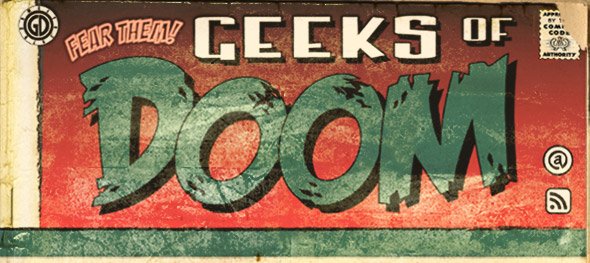



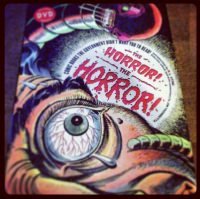
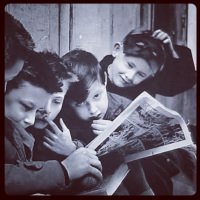


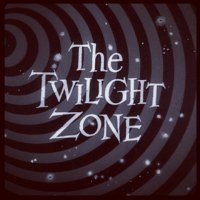







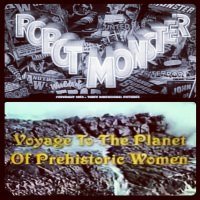



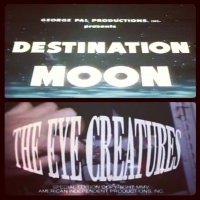
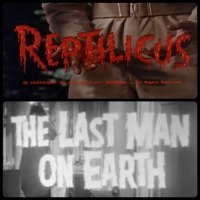
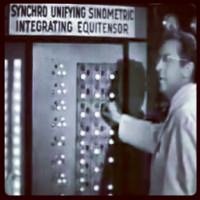

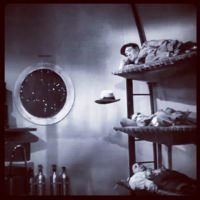
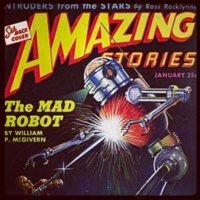
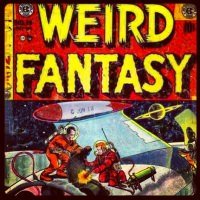





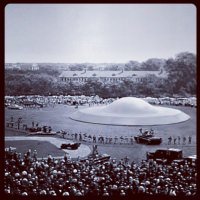













No Comments »
No comments yet.
RSS feed for comments on this post. TrackBack URL
Leave a comment